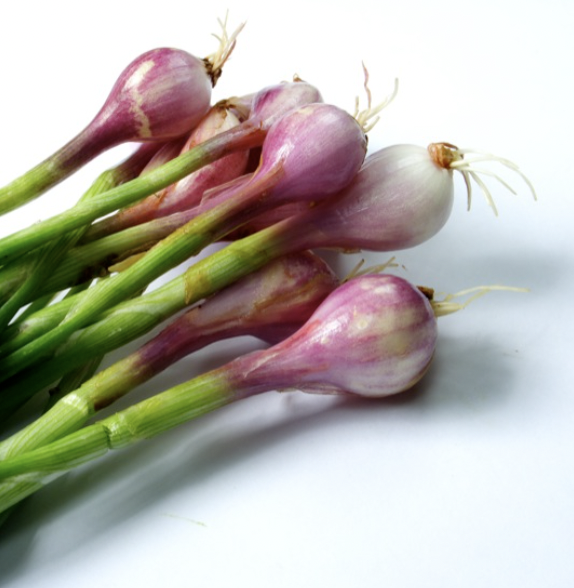Spring Shallots
What is it?
Spring shallots are harvested early in the season, usually spring or summer, and are simply the young bulbs of what will later mature into full-sized shallots. They are teardrop-shaped and resemble miniature onions but lack the dried outer layers of papery purplish skin and instead are moist with a whiter exterior.
What does it taste like?
The inner layers of gray-white flesh are mildly spicy and savory like a cross between onion and garlic and less sharp than that of a mature shallot. Cooking Spring shallots makes their already delicate flavor even more sweet.
What to do with it?
Shallots have a flavor affinity for beef, beets, Brussel sprouts, butter, chervil, chicken, chives, cream, duck, fish, lentils, potatoes, tarragon, thyme, turkey, veal, white beans, and wine. A key ingredient in Béarnaise sauce, shallots are widely used in salads and vinaigrettes. They’re also important in many Asian cuisines. If you confuse shallots and scallions, you’re far from alone. Older cookbooks used the term “shallot” to refer broadly to any small or immature onion, including green onions, or scallions. Shallots can be a bit laborious since each bulb needs to be individually peeled. Drop the whole shallot into a bowl of very hot water and let it stand for a minute; the skins will slip off easily. Store shallots in a cool, well-ventilated spot—they’ll last longer than if you put them in the fridge. Cover any leftovers with oil then refrigerate. The oil will help preserve the shallot, and the shallot will add a lovely flavor to the oil, ready for your next vinaigrette.
How to store it?
Whole raw shallots will last for 1 to 2 months in a cool (45-55° F; warmer than the refrigerator, but colder than normal room temperature) dark area. If a cool, dark area is not available, then shallots should be refrigerated to ensure maximum shelf life.



